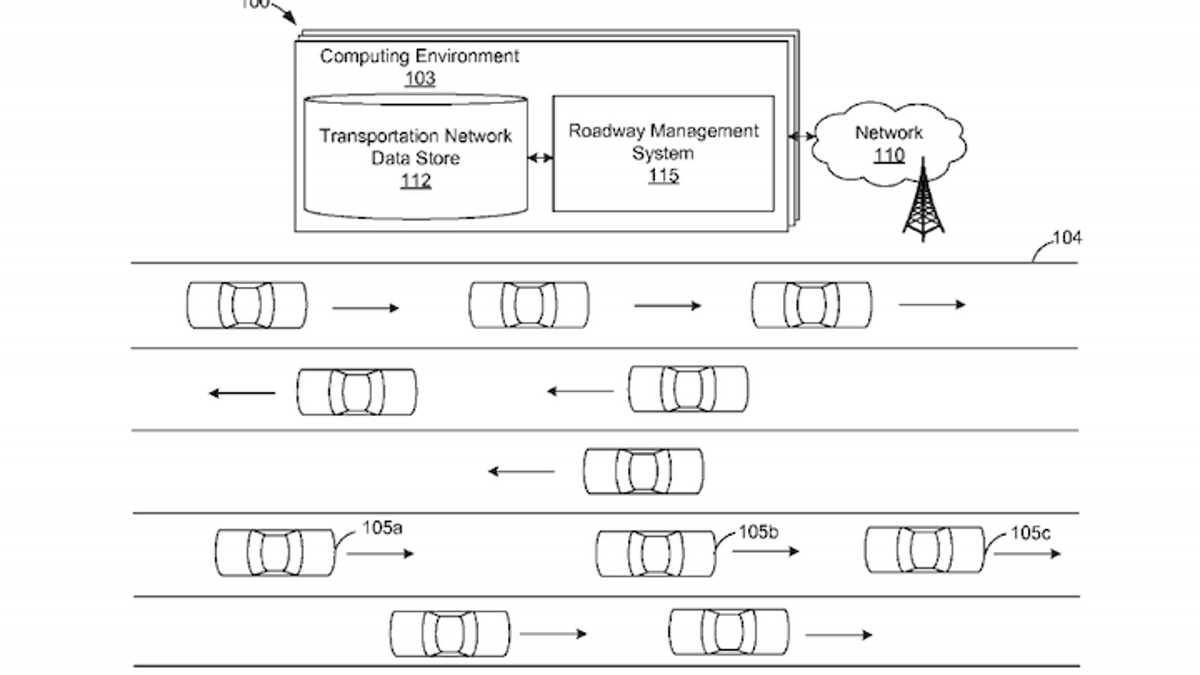
Apparently keen to have a finger in just about every pie that ever came out of the oven, Amazon looks to be planning a move into autonomous car technology. At least, that's what a newly revealed patent suggests.
Filed with the United States Patent and Trademark Office in November 2015 and granted this week, the document describes a system that helps self-driving cars safely deal with reversible lanes that change direction depending on the volume of traffic at any given time. Such lanes are often used in busy cities during rush hours when large amounts of traffic head inward during the morning and outward later in the afternoon.
Amazon's proposed technology describes self-driving vehicles communicating with computerized road management systems, allowing for the safe and efficient use of reversible lanes by autonomous cars and trucks, as well as other vehicles.
According to the filing, cars with the necessary kit would send traffic data to a nearby road management system that's constantly analyzing the incoming information. This would allow the system to work out the ideal lane usage at any given time while sending updates on such lane use back to the autonomous vehicles, enabling them to drive safely according to the conditions. It's essentially a form of vehicle-t0-infrastructure (V2I) communication, a technology that's gaining increasing attention in the automotive industry.
More From Digital Trends
More: Nissan steps up its self-driving and car-connectivity efforts in a big way
With Amazon's plan for a comprehensive drone delivery network still a ways off, the company's apparent interest in making road systems as efficient as possible makes perfect sense. And just like Google, Otto, and others, it could even be considering the use of self-driving trucks for its already vast and highly complex delivery network.
But it's worth noting that, as with all patents, there's no guarantee Amazon's design will ever come to fruition. However, it does reveal that the Seattle-based company is exploring how it might get involved in autonomous vehicle technology, so we shouldn't be too surprised if we see similar ideas -- or perhaps more ambitious plans -- presented by the company in the coming months and years.